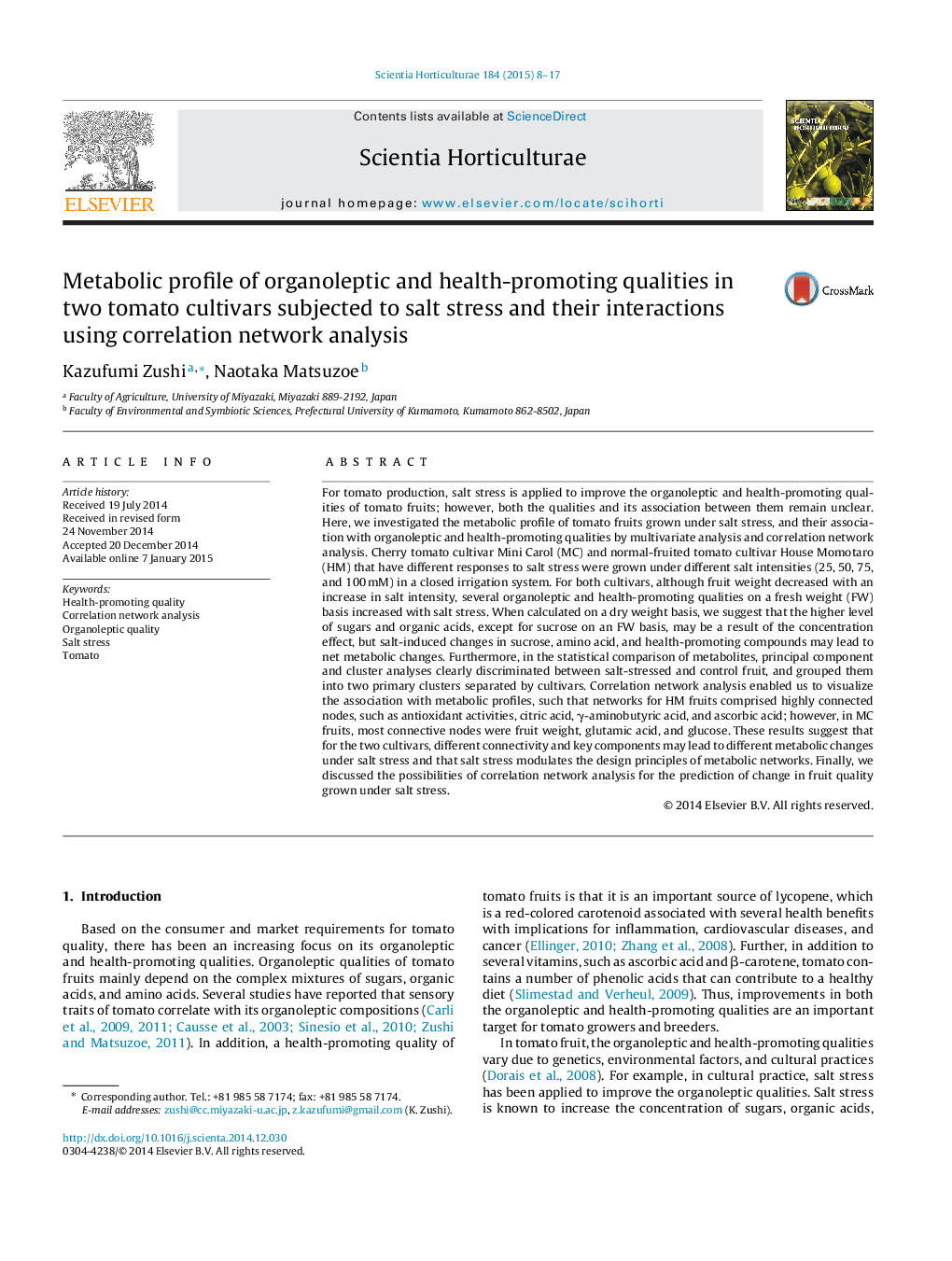| کد مقاله | کد نشریه | سال انتشار | مقاله انگلیسی | نسخه تمام متن |
|---|---|---|---|---|
| 4566460 | 1628814 | 2015 | 10 صفحه PDF | دانلود رایگان |
• Tomato fruit metabolites increased by salt stress on a fresh weight basis.
• Salt-enhanced metabolites are a result of the concentration effect.
• Salt-induced metabolic change occurred in sucrose, amino acids, and antioxidants.
• Metabolic networks under salt stress differed between cultivars.
• Key metabolites in the network may predict salt-induced metabolic change.
For tomato production, salt stress is applied to improve the organoleptic and health-promoting qualities of tomato fruits; however, both the qualities and its association between them remain unclear. Here, we investigated the metabolic profile of tomato fruits grown under salt stress, and their association with organoleptic and health-promoting qualities by multivariate analysis and correlation network analysis. Cherry tomato cultivar Mini Carol (MC) and normal-fruited tomato cultivar House Momotaro (HM) that have different responses to salt stress were grown under different salt intensities (25, 50, 75, and 100 mM) in a closed irrigation system. For both cultivars, although fruit weight decreased with an increase in salt intensity, several organoleptic and health-promoting qualities on a fresh weight (FW) basis increased with salt stress. When calculated on a dry weight basis, we suggest that the higher level of sugars and organic acids, except for sucrose on an FW basis, may be a result of the concentration effect, but salt-induced changes in sucrose, amino acid, and health-promoting compounds may lead to net metabolic changes. Furthermore, in the statistical comparison of metabolites, principal component and cluster analyses clearly discriminated between salt-stressed and control fruit, and grouped them into two primary clusters separated by cultivars. Correlation network analysis enabled us to visualize the association with metabolic profiles, such that networks for HM fruits comprised highly connected nodes, such as antioxidant activities, citric acid, γ-aminobutyric acid, and ascorbic acid; however, in MC fruits, most connective nodes were fruit weight, glutamic acid, and glucose. These results suggest that for the two cultivars, different connectivity and key components may lead to different metabolic changes under salt stress and that salt stress modulates the design principles of metabolic networks. Finally, we discussed the possibilities of correlation network analysis for the prediction of change in fruit quality grown under salt stress.
Journal: Scientia Horticulturae - Volume 184, 5 March 2015, Pages 8–17
